Z77 mITX Round-Up: Five of the Best – MSI, Zotac, ASRock, EVGA and ASUS
by Ian Cutress on December 31, 2012 7:00 AM EST- Posted in
- Motherboards
- MSI
- ASRock
- EVGA
- ZOTAC
- Asus
- Ivy Bridge
- Z77
- mITX
EVGA Z77 Stinger In The Box
So far in this review the box bundles have been varied. Some have offered a full set of SATA cables, others go for dual antenna for the included WiFi module. As the EVGA has no WiFi module, chances are we will not get an antenna – but one thing to note is that EVGA package their add-ons like no other manufacturer. Each one is sealed in an EVGA labeled plastic bag. While not the most thrilling of results, it must add a little to the cost of the product.
In our EVGA Z77 Stinger box, we get:
Manuals
Driver CD
Rear IO Shield
Molex to 2x SATA Power Cable
Sleeved Molex to 3x SATA Power Cable
4 x SATA Cable

The additional SATA power connectors are a nice touch, but let us look at it from a different angle. No USB 3.0 add-on is included because chances are in this modern era that users will have a case with USB 3.0 ports and they can plug that into the board. Chances are the same users will be buying power supplies with SATA power connectors. It just makes an odd combination to not have one but have the other.
EVGA Z77 Stinger Software
When installing the software for a motherboard, the manufacturer can take multiple routes. Most manufacturers have a one-button install which allows the user to select/deselect what they want installed and then it installs it all-in-one, sometimes with reboots. Other manufacturers only offer a one-by-one route, requiring the user to click through each of the drivers and go through the installers manually, even if the installer does come with a silent mode from the manufacturer (e.g. Realtek drivers). EVGA meet half-way: they use a one-button install which goes through all the drivers, but none of the installs are silent and the user has to sit there for a few minutes (up to 10) clicking Yes, OK or next throughout the whole sequence. Seems a lot of bother given that the software could have just used the silent install switch for everything.
On the driver CD, the option to install the drivers is in the front menu, and the software is in the next.
The sole software that comes from EVGA is the E-LEET Utility.
EVGA E-LEET Utility
Enthusiasts and overclockers will be familiar with the freeware CPU-Z utility. It is used to help identify the system being used, from motherboard to CPU to memory and GPU. It is also used to validate the processor speed when competitively overclocking. E-LEET is essentially a skinned version of CPU-Z, with a few little tweaks.
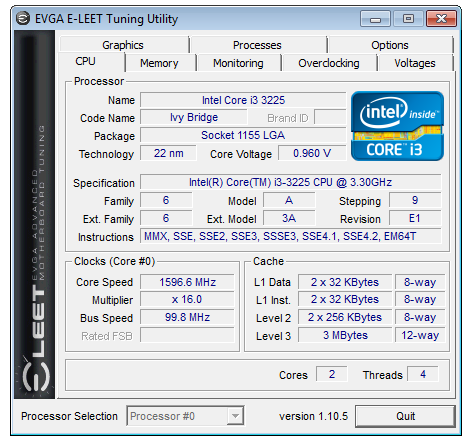
E-LEET gives the option of a few more tabs than CPU-Z does. These are specific to EVGA – we get a monitoring tab for voltages, temperatures and fan speeds:
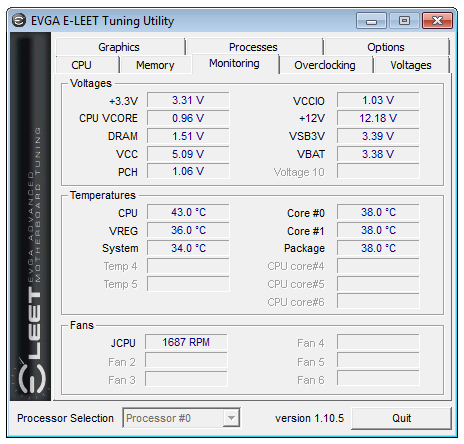
An overclocking tab which allows CPU Multiplier and BCLK adjustment on the fly:

A tab to adjust voltages, also on the fly:
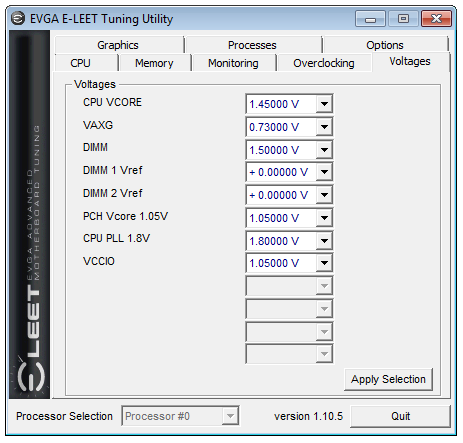
The graphics tab gets a revamp compared to CPU-Z, with options to overclock if you have a compatible graphics card:

A tab for a user to adjust the affinity of certain programs based on a hot-key. This is sometimes useful for overclockers when a benchmark actually decreases in performance when there are too many threads on offer:
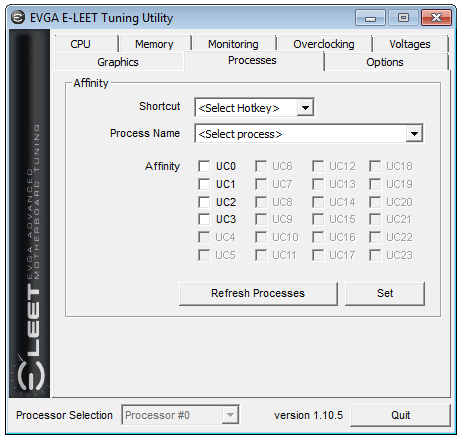
Finally the options menu which allows for a CPU-Z validation as well as saving particular overclocking profiles for various usage scenarios (e.g. downclocking after a benchmark has finished to keep the system stable):



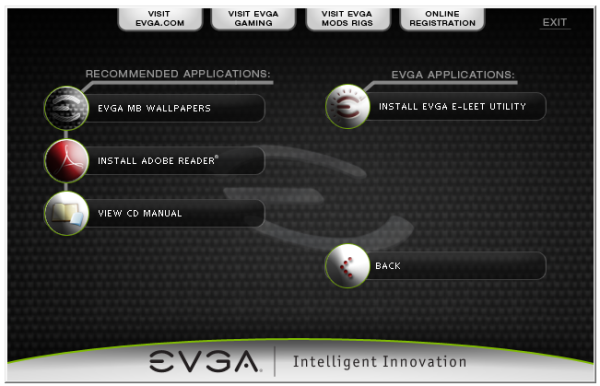
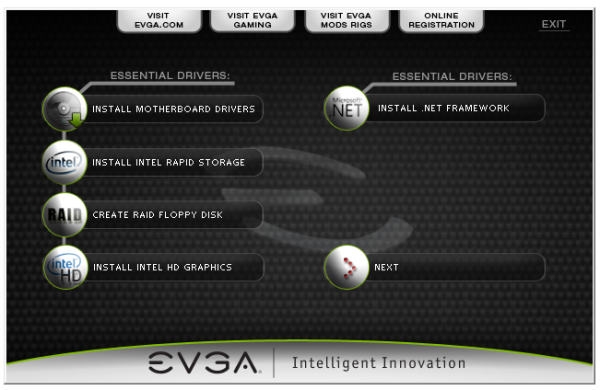














54 Comments
View All Comments
IanCutress - Monday, December 31, 2012 - link
Gigabyte wanted their H77 reviewed instead, which we reviewed recently: http://www.anandtech.com/show/6427Athelstan - Monday, December 31, 2012 - link
Thanks for the review. I'm curious why you mention the audio chip on all of these board. For the intended purpose, wouldn't the audio be over HDMI, making the onboard audio unused in most cases? Even then, all of the boards have optical out, making the audio chip to have very little to do other than to pass along the bitstream from the media thought the optical connection.IanCutress - Monday, December 31, 2012 - link
The audio chip also controls the front panel audio, and even if the audio was going through the HDMI, external speakers for a HTPC may be used via the audio jacks. In my personal usage scenario, my video out is via DVI-D to a 2560x1440 Korean panel via a dGPU, meaning all my audio still goes through the normal audio jacks. The other reason is that if I did not mention it, someone in the comments would ask why wasn't the audio chip mentioned. There is a price difference between the ALC889, ALC892 and ALC898, though manufacturers obviously get these on bulk deals (or at a discount when bought with the Realtek 8111E/F) and I am not privy to that information.Ian
Taft12 - Monday, December 31, 2012 - link
Speaking of audio, could you let us know the differences between those 3 Realtek audio chipsets? Is there any sound quality difference, or is it only features?mczak - Monday, December 31, 2012 - link
The 892 has somewhat crappy ADC/DACs quality-wise (that said most likely signal routing etc. on the board will have a much bigger effect on sound quality than the quality of the DACs, so using a higher quality chip can still easily result in worse quality than using a cheap chip with more care taken). The 889 and 898 seem quite similar there on paper.I think just about the only thing you'd really miss is the dolby digital live / dts connect features (encode multichannel audio to digital if you're using the digital outputs). But these are pure software features, so you can get them with the 892 as well - I believe though the board manufacturers are more likely to license them with the more expensive chips (I don't know if you could "upgrade" your chip with unofficial means there...). Realtek actually seems to list different ordering numbers depending on these features - interestingly there while all 3 of these chips are listed as a version without any of DDL/DTS Connect, only the 889 has a version with both of them, while the 892 only has a version with DTS Connect, and the 898 only has the version without them - the datasheet still lists those features as optional however.so maybe they just stopped using different ordering numbers (the 889 clearly is the oldest of the 3).
Athelstan - Monday, December 31, 2012 - link
*grins* Good point. If you don't mention it someone else would be asking for it.Stacey Melissa - Monday, December 31, 2012 - link
I'm running the ASUS board, and installed the AI Suite for a different ASUS Z77 board in order to get access to Fan Expert 2, which has far better fan control than v.1. Wish I could remember which Z77 board it was, but all I did was check the download pages for various Z77 boards to find one that included AI Suite with Fan Expert 2.IanCutress - Monday, December 31, 2012 - link
MSI include a program as part of the package to update the software, making sure you have the latest available. ASUS and Gigabyte need to do this ASAP, so people can take advantage of things like Fan Expert 2 without having to visit the website. System integrators often just install the drivers and software on the CD when selling a system, and then the user never updates it unless told to by either (a) friends or (b) the software itself.Ian
mfenn - Monday, December 31, 2012 - link
Am I the only one who is getting tired of the liberal copy-pasting of content between motherboard (and SSD) reviews on this site? I don't need to waste my time reading about the MSI design competition in every single review.I understand the need to provide background information to readers who may not peruse every single review, but that's why Tim invented the hyperlink. Link to the old review or to a purpose-built "company profile" page.
Sabresiberian - Tuesday, January 1, 2013 - link
Adding info some may be familiar with is preferable to leaving it out. If you don't want to read it, then I suggest you just skim or skip it entirely. :)